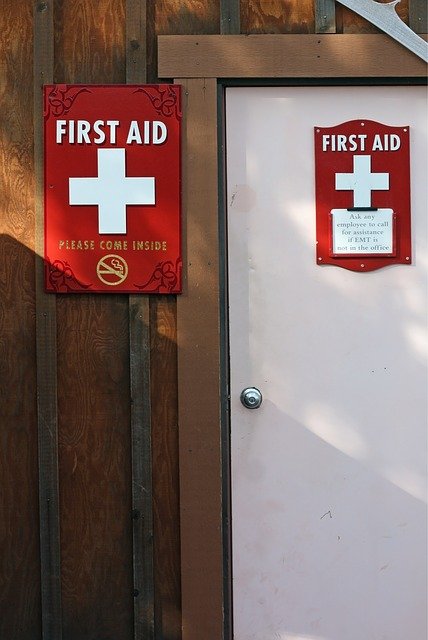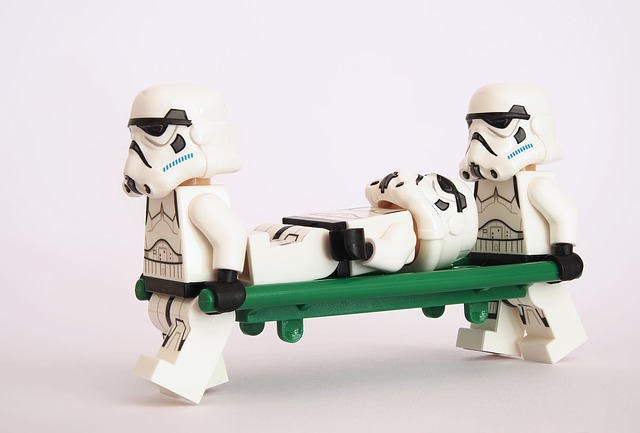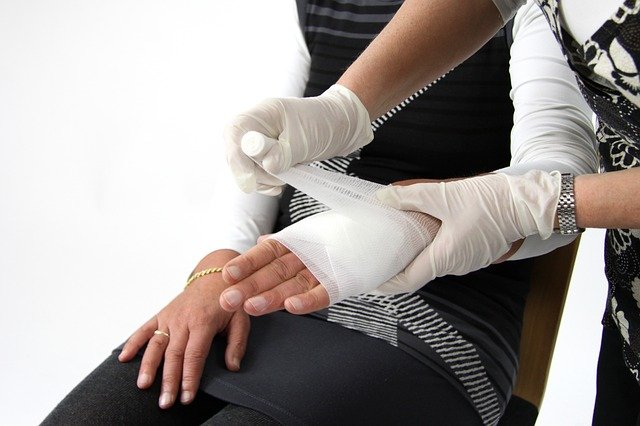First Aid for the Homestead- Part 3
"All bleeding stops eventually"- every paramedic I've ever met

All bleeding does stop, eventually. Hopefully it stops because we take the proper steps to make it stop rather than because there is no more blood. As I said in my last post of this series, bleeding control is a very basic skill that everyone should master. The problem is, unless you have experience in the medical field or combat, you probably haven't seen all that much blood, at least not more than once or twice in your life. So, when the average person experiences a physical trauma, they panic a little (or a lot). Then they cover up the wound because, well, it's kind-of scary looking. Next they call 911 and a couple of EMT's/Paramedics show up with smiles on their faces thinking, "Right on! This is the most exciting thing I've seen all day!" They make it look easy and wisk the poor soul out of sight and everything goes back to normal.
So what about homesteaders? Preppers? Hikers? Missionaries? These folks tend to have a different situation. Homesteaders, like hikers and missionaries, have a higher liklihood of being out there a ways. It could be a while before those smiling ambulance guys come to the rescue. Preppers are preparing for the worst. When all the things we take for granted (like smiling ambulance guys) aren't around anymore, preppers have to be self-sufficient when it comes to medical care, just like everything else.
OK, enough intro. Lets get down to brass tacks, as they say.
I won't bore you with too much anatomy and physiology. I will assume you know that the heart pumps blood through atreries(to the body) and through veins(back to the heart). And we can't forget capillaries which connect this system of arteries and veins. As far as bleeding goes...
Arteries- high pressured blood, bright red and spurting (pulsating)
Veins- low pressured blood, dark red and "oozing"
Capillaries- slow, even flow, usually stops bleeding without intervention
Since capillary bleeding usually stops without our help, lets focus on arterial and venous bleeding. All you really need to know here is that arterial bleeding is harder to stop. Recognize it for what it is and stop it, understanding that it may take some considerable effort.
So, how do we stop bleeding?"
First, with a gloved hand, hold pressure on the wound. If the patient is able to do this effectively, have them do it so you can do other things like getting the bandages.
Next, place a bandage on the wound and hold pressure with a gloved hand. Depending on the severity of the injury, 10 minutes with this method may stop the bleeding. If not, a tourniquet or hemostatic agent (eg. QuikClot) may be necessary. These will be covered in a later post.
Finally, use a pressure dressing by placing several layers of gauze pads on the wound and wrapping with rolled gauze. You can secure this with a self-adherent wrap like Coban. It sticks to itself and eliminates the need for tying a knot or trying to tape everything down.
If the bleeding is on an arm or leg, you can try elevating it above the level of the heart. This method has been used for years but there is discussion as to whether or not it is effective. It hasn't been proven to help, but it hasn't been proven not to. This is not to be used in cases of impaled objects, broken bones or possible spinal injuries.
A few tips when dealing with bleeding injuries
Don't waste your time with wet rags when stopping bleeds. It just makes things messier.
When you hold direct pressure on the wound, HOLD IT THERE FOR A WHILE. Just like with a nosebleed, you need to give it time to clot. 10 minutes usually does the trick.
If the injury is serious and/or arterial, seek medical attention.
If the wound continues to bleed through the bandages, repeat the above steps. Add gauze bandages on top of the existing ones. Don't remove the ones that are already in place, as they are adhering to the wound and helping it clot.
I hope this information helps you with developing skills as a homesteader, prepper, missionary, hiker or whatever. Let me know!
Disclaimer: This post and future medical/health posts by @goatgarden are for educational purposes only and not intended for diagnosis, treatment, or to replace professional hands-on training.


Yeah I have had some pretty good cut fingers before and you really do need a good amount of pressure AND time sometimes. Good post and I followed :)
Thank you!
Congratulations! This post has been upvoted from the communal account, @minnowsupport, by goatgarden from the Minnow Support Project. It's a witness project run by aggroed, ausbitbank, teamsteem, theprophet0, and someguy123. The goal is to help Steemit grow by supporting Minnows and creating a social network. Please find us in the Peace, Abundance, and Liberty Network (PALnet) Discord Channel. It's a completely public and open space to all members of the Steemit community who voluntarily choose to be there.
If you like what we're doing please upvote this comment so we can continue to build the community account that's supporting all members.
Another great one in this first aid for the homestead series - keep them coming @goatgarden
Thanks, will do!
Hi! good post. thanks for teaching me something.. I like your teaching approach, not all preachy.. :P i'm following u and upvoting now.
Thank you. I always ask my wife, "Please tell me I don't sound like a know-it-all, condescending person writing this." I just want to help people learn and better themselves. It pains me to see people that don't know how to help a hurting loved one. Sometimes just properly splinting a broken arm means all the difference in managing their pain.